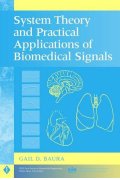System Theory and Practical Applications of Biomedical Signals
General Content
This text is divided into four parts. In Part I, classic and current filtering techniques for real time applications are discussed. These include frequency-selective filters, the pseudo-random binary sequence, adaptive filters, time-frequency representations, and time-scale representations. In Part II, modeling techniques for real time applications are discussed. These include the autoregressive moving average with exogenous input model, the artificial neural network model, and the fuzzy model. In Part III, linear and nonlinear compartmental models are discussed. These models have been applied to physiologic data such as metabolite and drug transport with uneven sampling intervals. In Part IV, algorithmic implementations and the need for more system theory in the medical instrumentation industry are highlighted.
The chapters are intentionally organized in groups of two chapters, with the first chapter describing a system theory technology, and the second chapter describing an industrial application of this technology. While this organization is somewhat unorthodox, it is designed to sustain the interest of graduate students.
Each theory chapter contains a general overview of a system theory technology, which is intended as background material for the application chapter, rather than as a comprehensive review. Textbooks that may serve as references for each technology are recommended at the end of each theory chapter. Each application chapter contains a history of the highlighted medical instrument, summary of appropriate physiology, discussion of the problem of interest and previous empirical solutions, and review of a solution that utilizes the theory in the previous chapter. When a new term is first introduced, it is emboldened, and defined in the glossary.
